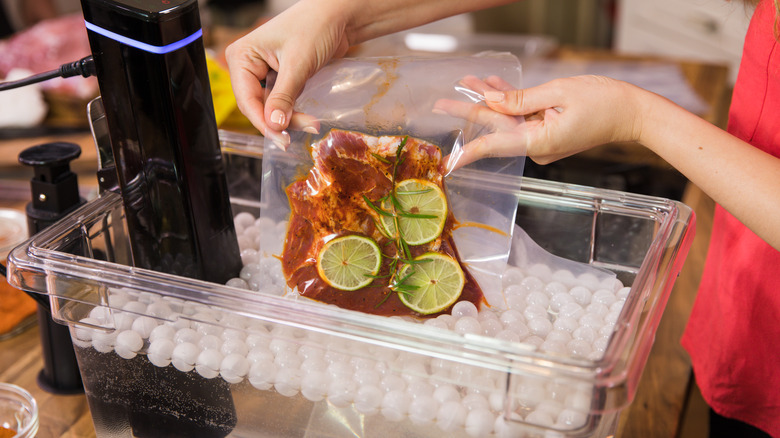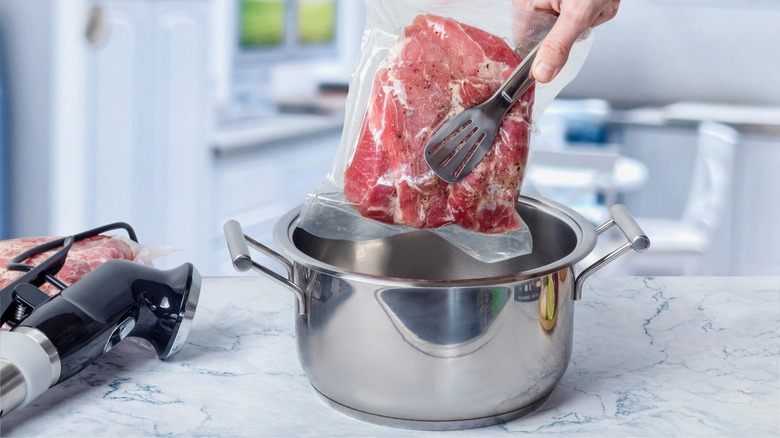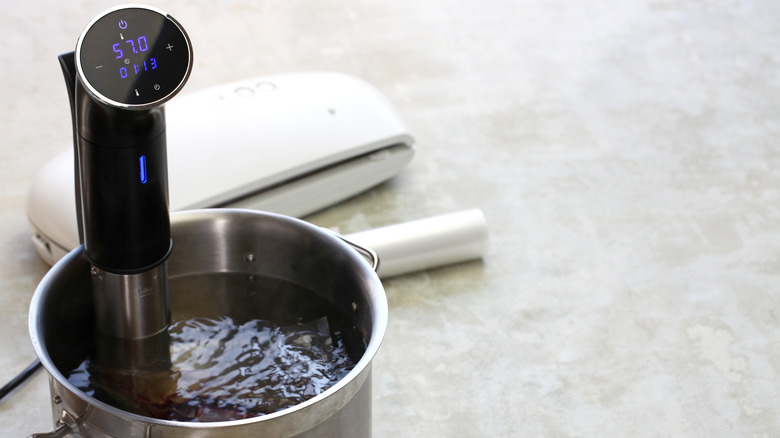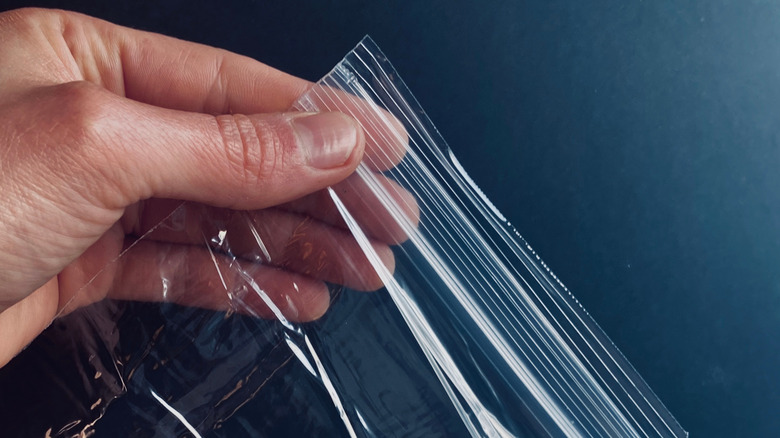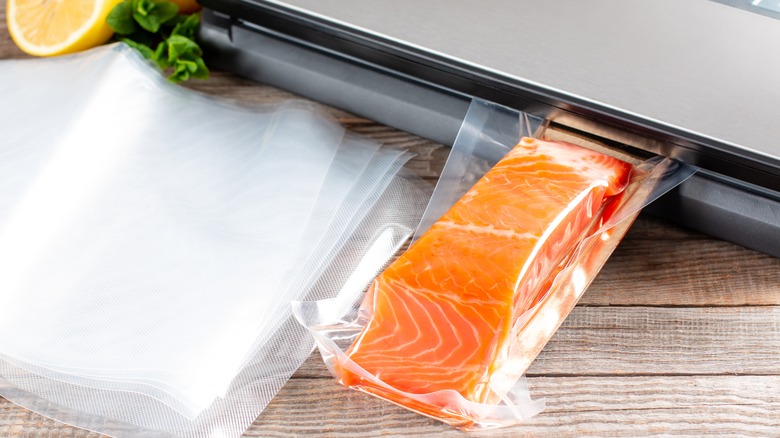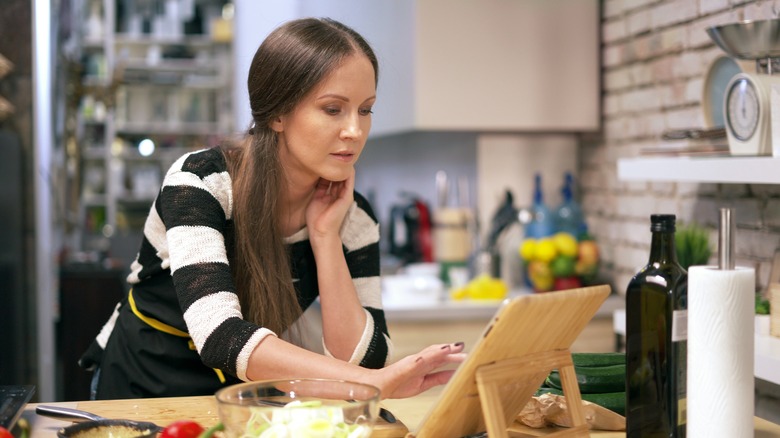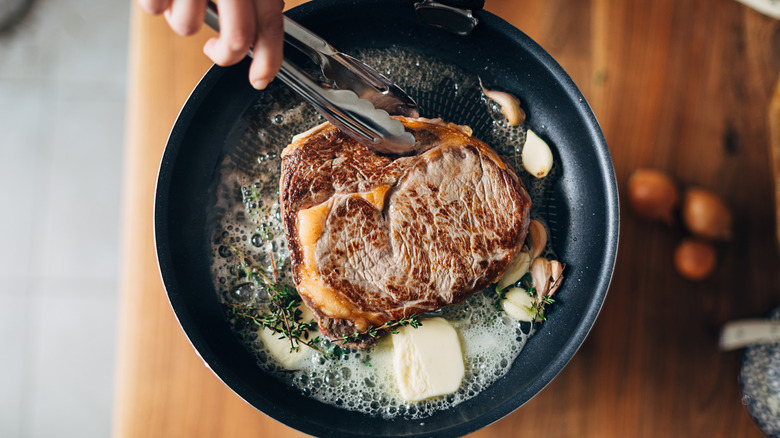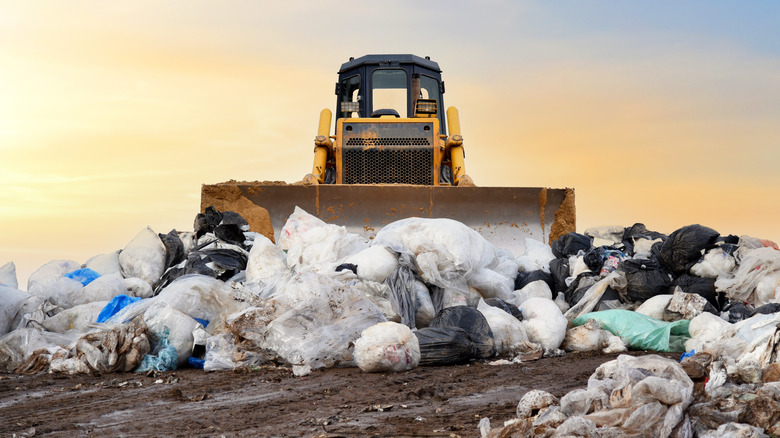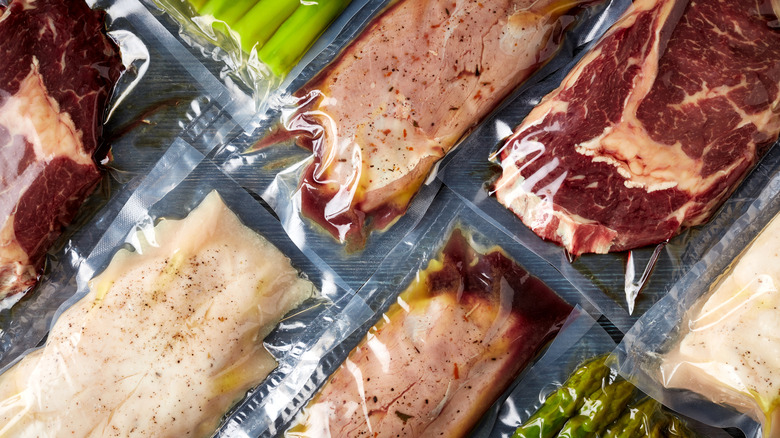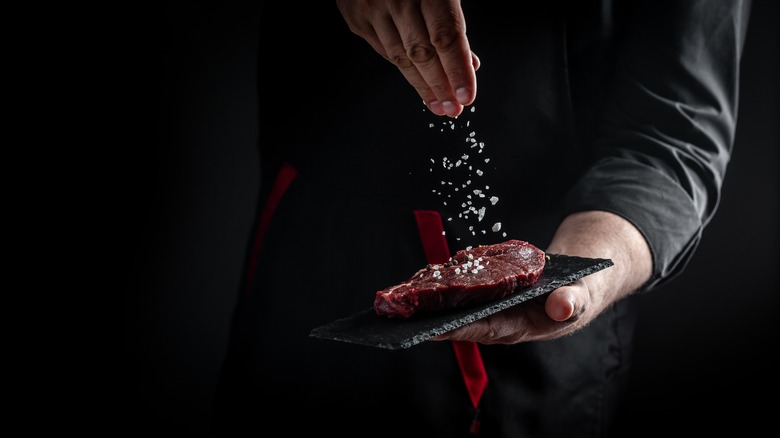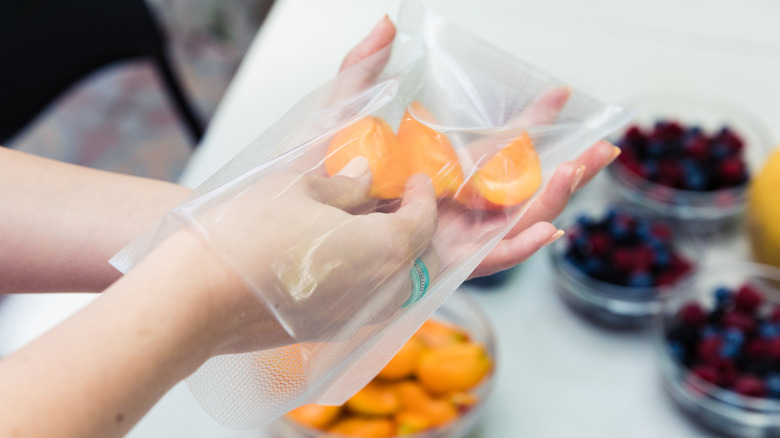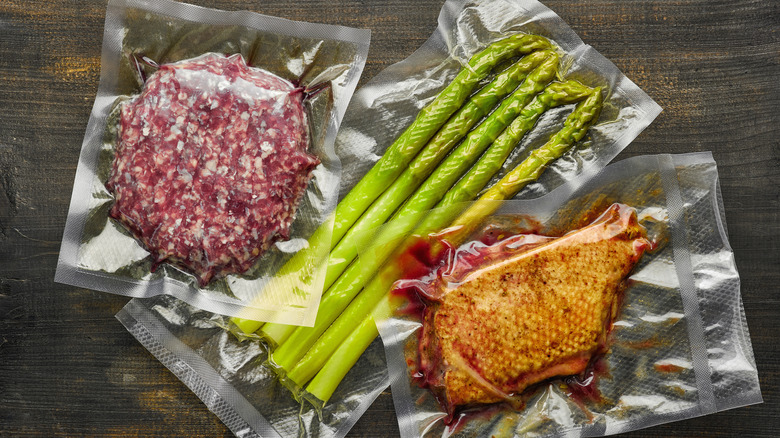11 Mistakes Everyone Makes With Sous Vide Cooking
The now infamous boil in a bag scandal that rocked Gordon Ramsay in 2009 did not only dent the celebrity chef's credibility — it revealed to the wider world a cooking process that had previously remained the secret of professional kitchens, sous vide. This technique, which involves cooking food in plastic bags submerged in a low-temperature water bath, left many people who visited Ramsay's restaurants feeling cheated (per The Guardian). After the lambasting Ramsay received in the press, many assumed sous vide as a culinary practice would recede. But despite the public initially meeting the practice with scorn — thanks to the expensive nature of the equipment — and health officials examining it warily — due to the low temperatures food is cooked at — the sous vide craze still managed to make the jump from restaurant to home (via The Guardian).
The predominant reason for the domestic adoption of sous vide is the clean and easy means it provides for expertly cooking a range of food with minimal culinary skill required. This in turn is the result of having minute control over temperature, which results in perfectly cooked food every time. The most classic example is sous vide steak, which is gently cooked over prolonged periods without drying out at all (via Anova). However, cooking via sous vide is not the foolproof process many equipment suppliers would have you believe. As with any cooking process, possibilities for mistakes — which will damage or ruin your dish — abound.
Not fully submerging food
Sous vide cooking uses the uniform and highly controllable temperature of a water bath to evenly cook food all over. With uniform cooking being the hallmark of sous vide, it can be extremely disheartening when your own food comes out uneven, with some sections overcooked and jammy while others are undercooked. Generally, uneven cooking occurs when the food is not fully submerged in the water,= and therefore not surrounded by uniform levels of heat. This can occur for two reasons.
First, the plastic bag used to house the food can float to the surface of the water. If bags are correctly vacuum-sealed there should be no air bubbles inside the bag. However, many home cooks often turn to Ziploc bags to save money. These can be difficult to remove air bubbles from via the so-called water displacement method (per Amazing Food Made Easy). Even if you successfully remove all the air, gasses produced during the cooking processes may cause these bags to float again. This has led J. Kenji López-Alt to suggest weighing down sous vide bags with a spoon or other kitchen utensils to ensure the bag — and food — remain fully submerged (via Serious Eats). Secondl, food cannot be fully submerged if the sous vide machine is not filled with enough water. Regular top-ups or a lid can be required for long cooks — such as big joints of meat — to counteract the process of evaporation, according to Sous Vide Tools.
Cooking food for prolonged periods in the danger zone
The low and slow approach taken with sous vide cooking can result in fantastic results, tenderizing tough meats and cooking vegetables to crisp perfection. However, sous vide cooking does come with a rather large caveat: It typically involves cooking food at low temperatures for prolonged periods of time, which, from a food safety point of view, raises a number of red flags. If food is kept in the so-called danger zone between 40 and 140 degrees — a range where harmful bacteria can multiply rapidly — for four hours, it is potentially hazardous and should not be ingested (via Food Microbiology Academy).
The risk of ingesting parasites or toxic bacteria that would have been killed if traditional high-temperature cooking methods were used is a major concern for many budding home cooks who have adopted sous vide. This risk is exacerbated as many home cooks have little or no understanding of the HACCP principles that shape food safety practices in industrial settings. Some organizations have become attuned to this fact, concluding that sous vide cooking raises the risk of food poisoning, according to The Daily Mail. In response to this elevated risk, many have provided tips to minimize the risk of food poisoning. First and foremost is to sous vide meat above 140 degrees. Another is to cut food into thinner pieces to ensure it is cooked all the way through, per the NSW Government Food Authority.
Using the incorrect bags
All sous vide cooking relies on food being placed in plastic bags before being submerged in order to ensure flavors do not escape and evaporation does not occur (via Anova). The gold standard is for food to be cooked in vacuum-sealed plastic bags, specifically designed for this very purpose. However, The Guardian reports that both the bags and vacuum packaging equipment can prove expensive, causing people to turn to simpler alternatives.
The most popular of these are undoubtedly Ziploc bags, which aside from being cheap are BPA-free and are made from polyethylene, according to SC Johnson. Bags made from this material are supposed to not denature or release chemicals during the sous vide cooking process and as such offer a safe alternative to official sous vide bags, per Cook's Illustrated. Cheap plastic bags made from polycarbonates should always be avoided, due to their ability to act as a hormone disruptor (via the Institute for Agriculture and Trade Policy). However, according to Environmental Health Perspectives, some studies have demonstrated that nearly all plastics — whether marketed as BPA-free or not — leach chemicals into food during cooking, bringing into question whether sous vide is a safe cooking practice at all.
Not sealing the bags
When a sous vide bag works properly it traps all the nutrients, flavor, and juices of the food, ensuring the finished product is as nutritious and enjoyable as possible, per Sous Vide Reviews. However, if water is allowed to enter the bag, a great deal of flavor and nutrients will be lost, and the food's texture will be irrevocably changed (per Home Kitchen Talk). The primary reason for water leaking into bags is that they were never sealed properly in the first place. The widespread use of Ziploc bags is partly to blame here as they have been known to open during the cooking process, according to Bon Appétit. Ensuring Ziploc bags are completely sealed and double-bagging your food should go some way in negating the risk of Ziploc bags opening.
Undoubtedly, the best way to seal bags for sous vide cooking is to use a vacuum packer, which in-home cooking scenarios, nearly always comes in the form of a bar sealer. These suck the air out of the bag and seal it at one end (via Great British Chefs). Having been mechanically sealed, these bags are much more resistant to leaking or opening than manually closed Ziploc bags, and as such should be the first port of call when sous vide cooking.
Cooking food for the incorrect amount of time
A misconception with sous vide cooking is that it's impossible to overcook food due to the tightly controlled temperatures. But while it may be impossible to burn your food when sous vide cooking, it is very possible to overcook — or undercook — it by leaving it submerged for an incorrect time period. Overcooking expresses itself uniquely in sous vide cooking, lending food an unpleasantly jammy texture. As reported by Sous Vide Wizard, the hot water, while not heating the food above its goal end temperature, will cause the continued breakdown of proteins and collagen. This means food left in the water will slowly adopt a soft texture.
Undercooking food is a result of submerging for a time period insufficient to elevate the core temperature of the food for the time period required to fully cook it. Due to the low temperatures used, sous vide cooking takes a lot longer than traditional methods. For comparison, steak cooked via sous vide takes between one to four hours to cook, while the same piece of meat would only take a few minutes when fried in the pan. To further complicate matters, cooks cannot simply skewer their cooking meat with a temperature probe to check the internal temperature as this will puncture the bag, causing it to take in water and ruin the food. Therefore, a degree of trial and error is required when initially working out cooking times.
Not browning your meat before serving
The Maillard reaction — a highly complex chemical reaction where heat causes reducing sugars and proteins to interact — creates flavors and a visual browning that humans find appealing. Sous vide cooking does not trigger the Maillard reaction due to the lack of high-intensity heat. To rectify this and achieve a satisfying browning it is important to sear your meat after it has undergone sous vide cooking. This can be as simple as placing some fat in a pan and frying your meat for 30 seconds on each side.
It is important to note that wet food cannot undergo the Maillard reaction, per Modernist Cuisine. It is therefore vital to dry your meat before you finish it in a pan. Otherwise, you risk overcooking your meat while waiting for the water to evaporate. Even meat alternatives such as tofu can benefit from a sous vide-then-sear cooking technique, as explained by Jim Smith, executive chef of The Hummingbird Way: "One of the most interesting ingredients that I have used sous vide to cook is firm tofu. I have found that butter poaching the tofu with herbs like basil, lime leaf, and cilantro before searing it infuses a great deal of flavor. It also makes pan-frying very easy; the added butter allows for browning and adds a great layer of flavor" (via Sous Vide Magazine).
Using large amounts of single use plastics
Although it ensures an even and controllable transfer of heat, sous vide cooking also produces an unrivaled amount of waste when compared with other common cooking techniques. This is because nearly every item of food cooked using this process is traditionally contained in a plastic bag, creating vast volumes of single-use plastic waste. However, with the public increasingly prioritizing the environment and governments introducing measures such as taxes to control plastic use (per Government of the United Kingdom), many are seeking ways to sous vide without utilizing single-use plastics.
One popular alternative is to purchase reusable bags, usually made from silicone. According to Sous Vide, these bags can be washed out and reused a large number of times. Many brands which make sous vide equipment such as Anova have launched their own silicon bag ranges, which, while not being vacuum sealable, still produce satisfactory results (via Reviewed). For those not willing to invest more money into their kitchen, Ziploc bags will perform the same function, as they are suitable for being washed. However, they are much less durable than their silicon counterparts and will break after being used a few times, potentially ruining your meal. Finally, mason jars can be used to hold certain foods cooking in the sous vide. However, Anova notes that due to the gasses and liquids released they are not suitable for the cooking of meats and vegetables as the jar might shatter under pressure.
Trying to sous vide absolutely everything
When you buy a new gadget the temptation to use it all the time can be overwhelming. Many fall into this trap when they first incorporate sous vide cooking into their culinary arsenal, forgoing all other techniques in favor of immersing ingredients in hot water. But as fantastic as the results of sous vide cooking can be, there are some ingredients that would be better cooked via other means, such as thin filets of fish (per Amazing Food Made Easy).
Furthermore, the overreliance on sous vide has led some to suggest that people's culinary skills are being lost. This notion was colorfully expressed by Rowley Leigh, a chef and cookery writer who has won numerous awards. He told The Guardian, "A lot of us have been asking what the point of sous vide is for years. As far as I'm concerned, it's employed by chefs to circumvent the annoying business of actually cooking food — mostly meat and fish — by the traditional methods of touch, feel and timing [...] Like all 'idiot-proof' techniques, it has produced a generation of idiot chefs who cannot cook by conventional means." A careful, balanced method in which a variety of cooking techniques are used to enhance a dish is perhaps the best approach to take.
Over-seasoning your food
As with any cooking technique the addition of seasoning — in the form of salt, pepper, herbs, and spices — will greatly improve the food cooked via sous vide. However, it is important to note that when sous vide cooking, the amount of seasoning needed to flavor the food is greatly reduced. This is because the longer cooking times mean seasonings spend a great deal of time in contact with the food, imparting much more flavor than usual (via Home Kitchen Talk). As such, a limited amount of seasoning should be used to avoid your final dish being unbalanced and unpleasant.
Furthermore, certain types of seasoning react better to sous vide cooking than others. For example, dried herbs and spices perform well given the extra cooking time and should thus be used wherever possible. Fresh ingredients, such as raw onion and garlic should not be used to season meat or fish as the vegetables will not break down at the temperatures used to cook the proteins. This will result in meat or fish that tastes predominantly of raw onion and garlic.
Overfilling sous vide bags
When cooking multiple portions of the same dish it can be tempting to save time, effort, and plastic by placing multiple items — for example steaks — in the same bag. Having a number of steaks in the same bag is not an issue as long as they remain in a single layer. As soon as any ingredients are heaped upon one another their uneven thickness makes cooking them evenly via sous vide impossible, according to Amazing Food Made Easy. Of course, this is especially dangerous for hazardous food such as chicken, where thorough cooking is required to minimize food poisoning risks. It is important to note that cooking meat in the same bag also gives rise to a unique phenomenon wherein the proteins fuse together creating an unsightly lump of meat which may alarm any dinner guests (per Sous Vide Magazine).
Finally, overfilling your sous vide bags can make properly sealing them a challenge, says Anova. This can result in leaky bags that ruin your food, or in extreme circumstances, bags that are so full they burst due to the gasses and liquids released during the cooking process. Amazing Food Made Easy says that if a bag does burst, it is vital that the equipment is cleaned thoroughly after use to ensure that it continues to function properly.
Trying to sous vide meat and vegetables at the same time
The idea of maximizing efficiency and minimizing effort by adding both vegetables and meat to the sous vide at the same time is a tempting one. Unfortunately, sous vide cooking is a process ill-suited to this one-pot style approach because both meat and vegetables require different temperatures to cook. The vast majority of vegetables need to be heated to a minimum of 185 degrees, according to Smart Vide, whilst sous vide meat generally is generally cooked at much lower temperatures. As a result, for meat and vegetables to be cooked in the sous vide together you have to be willing to accept either overcooked meat or undercooked vegetables.
Of course, there are ways around this issue, most namely through cooking one element of your dish via traditional means such as frying or boiling while the other cooks at its optimum temperature in the sous vide. Alternatively, items can be cooked one-by-one in the sous vide, and then reheated just before serving. If this approach is taken it is vital that cooked items are chilled rapidly and stored correctly to limit the risk of food-borne illnesses (via Sammic).
